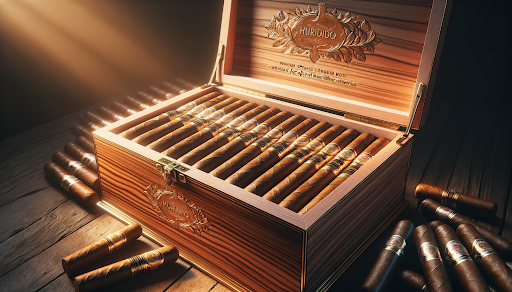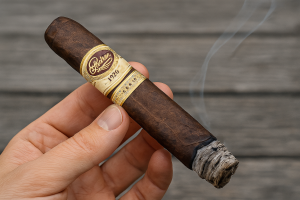What Materials Are Used to Make Humidors - A Must-Read for Quality Seekers

When it comes to maintaining the ideal environment for cigars, the construction of the humidor plays a crucial role.
Humidors are specifically designed to provide the right humidity levels to prevent cigars from drying out or becoming overly moist. The effectiveness of a humidor is largely determined by the materials used in its construction.
In this blog post, we will explore what materials are used to make humidors, their properties, and the reasons behind their use.
Materials That Are Used to Make the Perfect Humidor
Selecting the right materials is essential to building a humidor that is both functional and visually appealing.

Each component, from the wood type to the lining and exterior finishes, plays a specific role in preserving cigar quality and enhancing the overall experience.
1. Wood Types
The type of wood used in humidor construction is the most critical factor influencing both aesthetics and functionality. Here are the primary woods employed:
Spanish Cedar:
- Known as the gold standard for humidors, Spanish cedar is valued for its ability to maintain humidity.
- It has natural oils that repel tobacco beetles and possesses a pleasant aroma that positively influences the fragrance of cigars.
- Its resistance to warping under varying humidity levels makes it a popular choice.
Mahogany:
- Mahogany is another common choice, favored for its durability and attractive appearance.
- While it also retains humidity well, it lacks the same protective qualities against pests as Spanish cedar.
Oak:
- Oak is known for its strength and dense grain structure, which makes it suitable for larger and more robust humidors.
- However, it tends to impart more flavor to the cigars, which some aficionados may find undesirable.
2. Lining Materials
The interior lining of a humidor plays a vital role in maintaining appropriate humidity:
Wood Laminate:
- - Some humidors use plywood or engineered wood as an alternative to solid wood for cost-effectiveness.
- - While not as effective in humidity retention, they can offer a more budget-friendly option without significant losses in performance.
Veneer:
- Thin layers of fine woods can be bonded to less expensive materials to give a high-end appearance while controlling costs.
3. Insulation
To ensure stability in temperature and humidity levels, insulation materials are critical:
Foam Insulation:
- High-density foam is often employed in larger humidors to minimize fluctuations in temperature.
- This material is particularly useful in humidors designed for long-term storage.
Rubber Seals:
- Many humidors have rubber gaskets around the lid to create an airtight seal, preventing external air from affecting the internal environment.
4. Hygrometers and Humidifiers
Maintaining the right conditions is essential, and the components used significantly impact performance:
Digital Hygrometers:
- Recent models often include advanced sensors for accurate humidity readings, comprising plastic and digital components.
Humidity Beads or Gel:
- Materials like silica gel or polymer crystals absorb and release moisture to maintain desired humidity levels in the humidor.
5. Exterior Finishes
The aesthetic appeal of a humidor is often enhanced by various exterior materials:
Lacquer and Varnish:
- High-quality finish materials protect the wood and enhance its beauty, making the humidor an attractive display piece.
Leather Accents:
- Some luxury humidors utilize leather for an elegant touch, improving both appearance and grip.
Recent Trends in Humidor Craftsmanship
A 2023 survey by the Cigar Association of America found that over 57% of cigar enthusiasts prefer humidors with sustainable features.
- Bamboo and Reclaimed Wood: Increasingly popular as sustainable alternatives, these materials offer durability while reducing environmental impact.
- Eco-Conscious Finishes: Natural oils and non-toxic finishes are replacing synthetic coatings to enhance aesthetics without compromising sustainability.
- Renewable Resources: Manufacturers are exploring renewable wood sources and sustainable forestry practices to meet consumer demand for eco-friendly options.
By choosing humidors made from sustainable materials, enthusiasts can enjoy premium brands like AJ Fernandez and Cohiba while supporting responsible craftsmanship that aligns with environmental values.
Mastering Humidor Selection
In conclusion, understanding the materials used in humidors provides a deeper appreciation for how they function to protect and enhance the flavor profiles of cigars.
By choosing the right humidor with quality materials, cigar aficionados can significantly elevate their smoking experience.
For a premium selection of cigars, visit our website and find the ideal match for your storage needs.
Top Takeaways
- Invest in Quality: When choosing a humidor, the quality of materials directly influences performance. Spanish cedar remains the best option for high humidity retention and pest control.
- Consider Size and Features: Think about the number of cigars you wish to store and choose accordingly; larger humidors often require better insulation.
- Maintain Regular Checks: Regardless of the materials used, regularly monitor humidity levels and maintain your humidor to ensure longevity and optimal cigar preservation.















